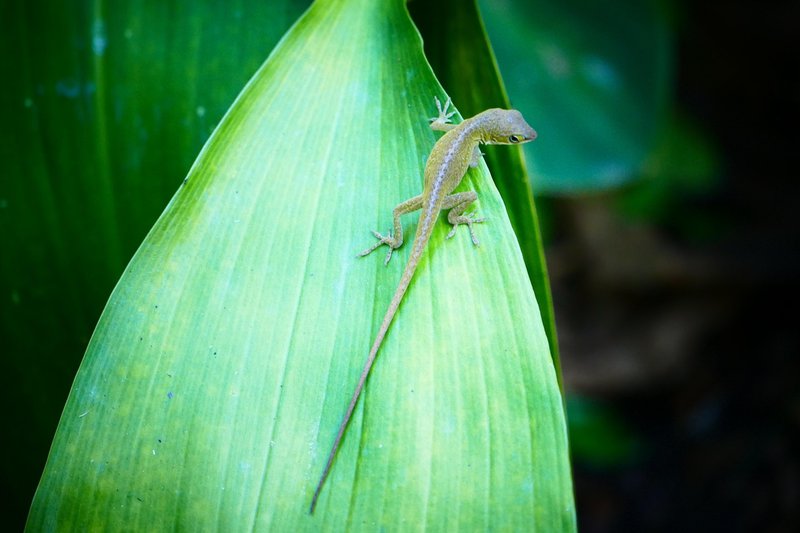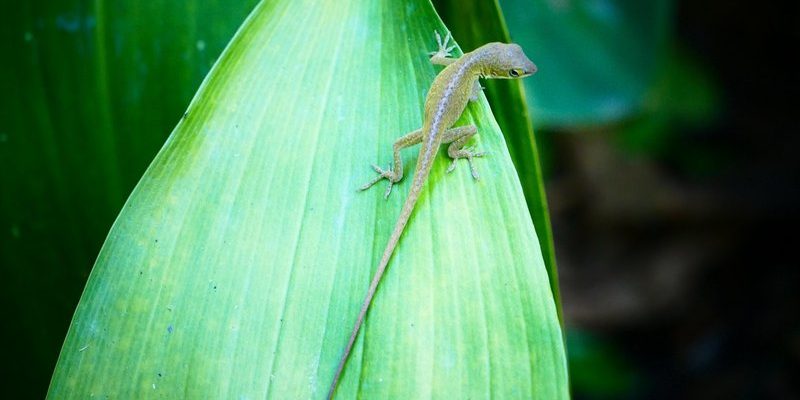
Anoles are versatile lizards that thrive in various environments, especially in tropical and subtropical regions. They’re known for their color-changing ability and unique behaviors, making them fascinating subjects for both casual observers and dedicated herpetologists. In this article, we’ll explore the many roles anole lizards play in their natural habitats, from their interactions with predators to their contributions to plant life. So, grab your favorite beverage, and let’s dive into the vibrant world of anoles!
Understanding Anole Lizards
Anole lizards belong to the family Polychrotidae, and they’re primarily found in the Americas, particularly in the Caribbean. There are over 400 species of anoles, each with its unique traits. One of the most common types is the green anole, which can change its color from bright green to brown based on its environment and mood. This ability isn’t just for show; it helps them blend into their surroundings, making it harder for predators to spot them.
You might be wondering how anoles manage to thrive in different environments. Their adaptations are impressive! They have long toes with adhesive pads that allow them to climb trees and other vertical surfaces effortlessly. This skill not only helps them escape danger but also allows them to hunt insects in hard-to-reach places. Essentially, they’re little acrobats of the reptile world, and their physical traits are key to their survival.
The Anole’s Role in the Ecosystem
Anoles serve several important functions in their ecosystems. For one, they are significant insectivores. By feeding on a diet rich in insects, they help control the pest population. This natural pest management is beneficial to plant life, as it reduces the number of herbivores that can damage vegetation. A thriving population of anole lizards can lead to healthier plants, which in turn supports a wider variety of wildlife.
Moreover, the presence of anoles can impact the food web. They are prey for birds, snakes, and even larger reptiles. By serving as a food source, anoles help sustain these predators, which rely on them for survival. In this way, they contribute to the overall health of their ecosystem, creating a balance that supports diverse habitats.
Anoles and Plant Interactions
Have you ever noticed how lizards seem to favor certain plants or trees? That’s no accident. Anoles often perch on plants to bask in the sunlight or survey their territory. This behavior is vital because, while they enjoy these sunny spots, they also contribute to plant health through their activities.
For example, while hunting for insects, anoles can help with pollination. As they move from plant to plant, they may inadvertently transfer pollen, which is crucial for the reproduction of flowering plants. Additionally, their waste products can act as fertilizer, enriching the soil and promoting plant growth.
You might think of anoles as tiny gardeners, tending to their surroundings in their little ways. This interaction helps create a richer, more diverse habitat that benefits not only themselves but countless other organisms as well.
Anoles and Climate Adaptation
Climate change poses significant challenges to wildlife, and anoles are no exception. Their ability to adapt to changing temperatures and weather patterns is crucial for their survival. For instance, studies show that some anole species are shifting their ranges to cooler, higher elevations as their habitats warm up.
This adaptation isn’t just about finding a new home; it’s also about maintaining their roles in the ecosystem. As temperatures rise, the insects they feed on may also shift, impacting their food sources. It’s a delicate balance, and the survival of anole lizards can give us insights into the broader impacts of climate change on ecosystems.
You might wonder how this plays out practically. For anoles, it could mean changing their behaviors, altering their diets, or even migrating to new areas as necessary. This adaptability makes them a fascinating subject for researchers who study the impacts of environmental changes.
The Threats Facing Anoles
Like many wildlife species, anoles face various threats that can disrupt their populations. Habitat loss is a significant concern due to urbanization and deforestation. As humans expand their living spaces, many natural habitats are destroyed, reducing the available space for anoles to live and thrive.
In addition to habitat loss, invasive species can pose serious threats. For instance, predatory animals that are not native to an area can decimate local anole populations. In some cases, these invasive species compete for food or directly prey on anoles, leading to declines in their numbers.
Conservation efforts play a vital role in ensuring that these unique lizards can continue to thrive in the wild. Protecting their habitats and controlling invasive species are essential steps in preserving their populations and the ecosystems they support.
Anoles in Research and Education
Anoles are not just fascinating to observe; they also serve as valuable subjects for scientific research. Researchers study their behavior, physiology, and ecology to understand broader concepts in biology and conservation. For instance, their adaptability to changing environments provides critical insights into how species might respond to climate change.
In educational settings, anoles inspire curiosity about reptiles and ecosystems. Kids and adults alike can learn about biodiversity, food webs, and the importance of conservation through hands-on experiences with these lizards. Science classes often utilize them as models for examining natural selection, adaptation, and ecological interactions.
By learning about anoles, we open the door to a greater understanding of the natural world. It’s a reminder of our connection to wildlife and the responsibility we have in protecting these creatures and their habitats.
The anole lizard plays a crucial role in its natural habitat, from controlling insect populations to supporting plant health and contributing to food webs. Their fascinating adaptations and behaviors make them not just survivors in their environments but also critical components of the ecosystems where they live.
As we face increasing environmental challenges, understanding the role of such species becomes more important than ever. Anoles remind us of the interconnectedness of life and the importance of protecting biodiversity. By looking out for these small yet mighty creatures, we can help ensure a balanced ecosystem for generations to come. So, the next time you spot an anole basking in the sun, remember that it’s not just resting; it’s actively contributing to the health of its world.

